They may look familiar, but a few small tweaks make a world of difference.
Even though they have only been around for a few years, it is hard to imagine a time when Nanoleaf's light panels weren't associated with the modern smart home, or acting as a background fixture for your favorite YouTuber or Twitch streamer. With the release of the Nanoleaf Aurora back in 2016, Nanoleaf managed to create an entirely new device category on its own, and it has been adding new shapes and improving on the original design ever since.
It is only natural that Nanoleaf would take what it has learned over the years and apply them to the iconic design of the original, and that is what they have done with the Nanoleaf Shapes Triangles — which are now available in two sizes. I have been lighting up my home for the past few months with both sizes of the latest Nanoleaf Shapes, and while they may look familiar, a few small refinements and a new mounting system behind the scenes makes them the perfect light panel. Let's take a look at what makes them the best HomeKit light panels — or smart light panels in general, that you can buy today.
Nanoleaf Shapes Triangles
Bottom line: The Nanoleaf Shapes Triangles offer a vastly improved experience over the original Aurora panels with onboard music visualization, touch controls, and an easier to use mounting system. If you are just starting out on your Nanoleaf journey, these are the ones to get.
The Good
- Two sizes available
- Bright and colorful
- Easy installation
- Supports Alexa, Google, HomeKit
- Work with other Nanoleaf Shapes
The Bad
- Expensive
- Permanent mounting hardware not included
- Uneven lighting near corners
From $120 at Best Buy From $120 at Home Depot From $120 at Nanoleaf
Quick, colorful, and connected
Nanoleaf Shapes Triangles: What I like
As previously mentioned, Nanoleaf's latest triangles come in both a standard size and a "mini" variant. The standard triangle measures 9 x 7.75-inches, coming in just shy of the Aurora triangle panels, and weighing 141 grams. The Mini Triangles are — as you may have guessed, significantly smaller and lighter with measurements of 4.5 x 3.8-inches, and a weight of just 40 grams. Panel thickness is the same for both sizes at 0.24-inches, which doesn't make them stand out very far when installed on a wall, and even when they are not illuminated, they just have a cool futuristic look to them with the slim profile.
The light panels have a series of female connectors around the back, with the Mini Triangles having one on each side, and the larger triangles having two on each side. Linking the panels together involves snapping a rigid plastic connector piece to one of the designated areas, and then snapping in the next panel to the exposed portion of the connector. The new triangles work with other recent Nanoleaf panels, like the Nanoleaf Shapes Hexagons series, and adding one to my existing set worked just like connecting two of the same shape together. I really like just how easy it is to mix things up, although I did end up using the Triangles in their own installations to add some color to even more parts of my home.
Each Nanoleaf panel is capable of displaying 16 million different colors and shades of white, although each panel is limited to just one color at a time. For actual light output, the larger Shapes Triangles can reach up to 80 lumens of brightness each, while the smaller Mini Triangles are limited to just 20 lumens. Honestly though, while that may seem like a big difference in output, in my particular installation of the Mini Triangles where they are situated underneath the Nanoleaf Aurora panels — which are rated at 100 lumens, it is really not noticeable at all.
Other hardware highlights include touch sensitivity for each panel, a physical controller that attaches in the same manner as additional panels, and an onboard microphone used for responding to music in the room. The controller includes buttons for adjusting brightness, switching between assigned scenes, turning on the aforementioned music visualizer mode, and toggling the panels on and off. Rounding things out is a power brick that, again, attaches using the same snap in system as the controller and panels, which can power up to 28 standard size triangles and up to 77 Mini Triangles.
Installation and setup
Setting up the Nanoleaf Shapes Triangles was a quick and easy affair compared to the original Aurora triangle panels. The latest triangles utilize the newer two-piece system and linkers that we saw with the Shapes Hexagons series, which makes installation a breeze when combined with a set of removable adhesive strips. All it really takes to get up on the wall is a peel, stick, and click, but as you may expect, best results will come with careful planning before jumping in. Although it isn't required, I definitely recommend downloading the Nanoleaf app and trying out the handy Layout Assistant prior to installation.
Pairing the Shapes Triangles to the Nanoleaf app is just as easy as installing the panels on the wall, at least for those that use iOS. During setup, the Nanoleaf app will display the familiar HomeKit code scanning interface, which uses your device's camera to link things up. Once connected, the panels will be available in both the Nanoleaf app, and the native iOS Home app without having to go through an additional setup process.
Nanoleaf App and HomeKit
Nanoleaf's app provides a plethora of options for the Shapes Triangles, ranging from brightness controls and color changes, to creating schedules and setting up touch actions. The app also gives users the ability to create their own scenes and assign colors to each individual panel as well, which is perfect for power users. One of my favorite things about the app is how it shows off the color palette used by a particular scene in line when browsing, and how you can preview a scene with just a tap — I take advantage of quite often.
Advanced features in the Nanoleaf app include the ability to set Circadian Lighting, which is similar to Apple's HomeKit Adaptive Lighting feature that came with iOS 14. Circadian Lighting allows the panels to automatically adjust white color temperature throughout the day to calm and energize the mind when appropriate. Nanoleaf provides two options for Circadian Lighting: Auto which adjusts the panels based on sunrise and sunset times, and Manual that allows you to set custom times. Both options also give users the ability to tweak the desired color temperature to suit personal preferences.
Through HomeKit, the Nanoleaf Shapes Triangles can be controlled via the Home app, and via voice with Siri. HomeKit controls include brightness, color, and color temperature adjustments all available on-demand, and the panels are available to use in automation and scenes. As someone who prefers to keep things as simple as possible, I love it when I can get the essential functions without having to jump around or even keep another app installed just for a single device.
Also of note for HomeKit, is that each and every panel is available to be used as a button for HomeKit actions. Yep, you read that right — by purchasing a Shapes Mini Triangles Starter Kit you get five shiny new HomeKit buttons, or seven if you opt for the larger variety. I am always excited by adding more capabilities to HomeKit, so I was ecstatic to get more "buttons" for the home, but as you will read later, it sounds better than it works.
Uneven edges
Nanoleaf Shapes Triangles: What I don't like
For the most part, the Nanoleaf Shapes panels offer a seamless and consistent look when it comes to lighting, but things can vary with some colors and brightness levels. As I saw with the Nanoleaf Shapes Hexagons, the triangles do suffer from some unevenness near the corners, which is noticeable with specific colors, but not enough to ruin the overall experience. I will mention that the issue is more pronounced in photos, so what you are seeing in this review are not quite the same in-person.
Another minor complaint that I have surrounds the use of rounded corners now on the bezels for the new triangles. While the softer curves do not look bad at all, I still prefer the harder lines found on the original Aurora triangles, as they just look more futuristic and clean. Speaking of the bezels, I would love to see Nanoleaf push the surface area closer to the edge in the corners, as the "dead" space in between connected panels does impact the look of the finished product, especially when you mix in additional shapes.
Moving over to performance, I did come across an issue where one of the larger Triangle panels would illuminate a different color from the rest on the wall and it also prevented the system from going into paring mode. Once isolated, the rest of the panels worked perfectly, so I chalked it up as being defective and I sent it off to Nanoleaf for review. Another issue that I noticed was that the panels would sometimes struggle to maintain transitions with dynamic scenes like Northern Lights. Every once in a while, I would spot the panels acting slower for a few seconds, then speeding up above the normal transition speed to "catch up".
Finally, as much as I enjoy all of the extras that come with the Nanoleaf app and HomeKit, there are some annoyances and limitations to be aware of. Navigating the Nanoleaf app really takes some trial and error to locate everything, with controls buried under long presses, and advanced settings like Circadian Lighting, being found in not so obvious places. As far as HomeKit goes, I found that using the panels as individual touch buttons was inconsistent, so much so that I stopped using them altogether for now. Also it is a bummer to see that the panels do not support HomeKit Adaptive Lighting as of yet.
The competition
Despite Nanoleaf's smart light panels being on the market for a few years now, there isn't a whole lot of competition outside of Nanoleaf itself to be found. Notable contenders include Lifx's Beam and Tile systems as well as the LifeSmart Cololight Plus. However neither match the triangle shape of the latest Nanoleaf designs, and in the case of the Tile, they are incredibly hard to find as they appear to be discontinued.
In my review of the LifeSmart Cololight Plus, I found them to be an affordable alternative that actually offers some features beyond what Nanoleaf currently provides. One is the ability to use LifeSmart's panels on the wall or on a flat surface thanks to a removable stand. Another is the Cololight's ability to display multiple colors across a single panel which leads to smoother transitions and dynamic effects.
If you are not quite sold on the idea of hanging up multiple light panels, or committing to a full-blown starter kit on your wall, the Cololight Plus is a great place to start.
Nanoleaf Shapes Triangles: Should you buy
You should buy this if ...
You want to create your own colorful works of art
Nanoleaf's Shapes Triangles are an excellent choice for those that want a truly customizable lighting experience for their homes. Sure, there are tons of cheap smart bulbs and light strips available, but only Nanoleaf's panels deliver the colorful fun while serving as a functional piece of art. In my home, I have light panels that take on the form of a family member's initials, a set that resembles a large flower, some that just make up basic shapes like a line, and of course, the heart shape as seen in this review.
You want smart home controls over your lighting
Smart home controls take the Nanoleaf Shapes Triangles to another level through app connectivity and community features. By connecting the panels to your home Wi-Fi network, you can toggle them on and off on-demand, as well as adjust colors and change brightness levels. Through smart home integration, the panels can be used in automation and scenes with HomeKit, as well as with voice controls through Siri, Alexa, and the Google Assistant.
You plan to expand in the future
With an updated modular connector, the Nanoleaf Shapes Triangles work as a base for potential future designs like squares making them a better choice over the original Nanoleaf Aurora triangles. As we have already seen with Hexagon connectivity, the Shapes Triangles open the doors to even more customization, well beyond what you get in the box. Since Shapes Starter Kits include the all-important controller and power supply, you can pick up expansion sets for other shapes without having to shell out for a complete kit.
You should not buy this if ...
You are looking for an affordable smart lighting system
Let's face it, even with the Shapes Mini Triangles sporting the lowest price for a Nanoleaf light panel system to date, they are still expensive. The Mini Triangles Starter Kit only comes with five panels total, and thanks to the smaller size, they do not cover a lot of real estate on the wall. Only having five panels to start also limits design potential, as I struggled with coming up with a unique display for my walls.
You don't plan to use the smart features
While you can setup and use the Nanoleaf Shapes panels without connecting them to your home network, you will miss out on a lot of the extras that truly make them worth considering. Without a smart connection, your panels will be limited to a few pre-programmed scenes, brightness adjustments, and a single music visualizer mode. You will also miss out on remote controls so you will have to walk over to the panels to turn them on and off.
You want to use the panels on a table or desk
Unfortunately, like previous Nanoleaf light panel systems, the newest Shapes Triangles line doesn't come with a stand as they are designed for installation on a wall. Even if a third-party stand were available, the Triangles would look a little odd with the thin profile, and it would be incredibly hard to balance when multiple panels are connected.
If you have always been intrigued by creating your own smart light display in your home, or just want something that adds some instant color and flair, then the Nanoleaf Shapes Triangles are an excellent choice. With a new modular connection system that allows you to add other shapes into the mix, you simply won't find a better alternative. However, if you prefer to have something smaller that sits on a desk, or if you don't want to hassle with smart home features, then you will definitely need to look elsewhere.
Even though the Nanoleaf Shapes Triangles may look similar to the original Nanoleaf Aurora panels, there are enough tweaks and refinements going on behind the scenes to easily declare them as being the best that the company has to offer today. The Nanoleaf Shapes Triangles get just about everything right, from the improved mounting system and new touch controls, to incorporating the music visualizer capabilities right out of the box.
If that weren't enough, Nanoleaf's new modular connector system opens the door to a whole new world of design possibilities and extend the overall product life. If you have always wanted a set of Nanoleaf panels, then go with the Shapes Triangles, they are a fantastic way to add some color — and fun, to your home. Regardless of which size you choose, you won't be disappointed.
Nanoleaf Shapes Triangles
Bottom line: The Nanoleaf Shapes Triangles offer a vastly improved experience over the original Aurora panels with onboard music visualization, touch controls, and an easier to use mounting system. If you are just starting out on your Nanoleaf journey, these are the ones to get.
From $120 at Best Buy From $120 at Home Depot From $120 at Nanoleaf
from iMore - The #1 iPhone, iPad, and iPod touch blog https://ift.tt/3qqJzgV
via IFTTT
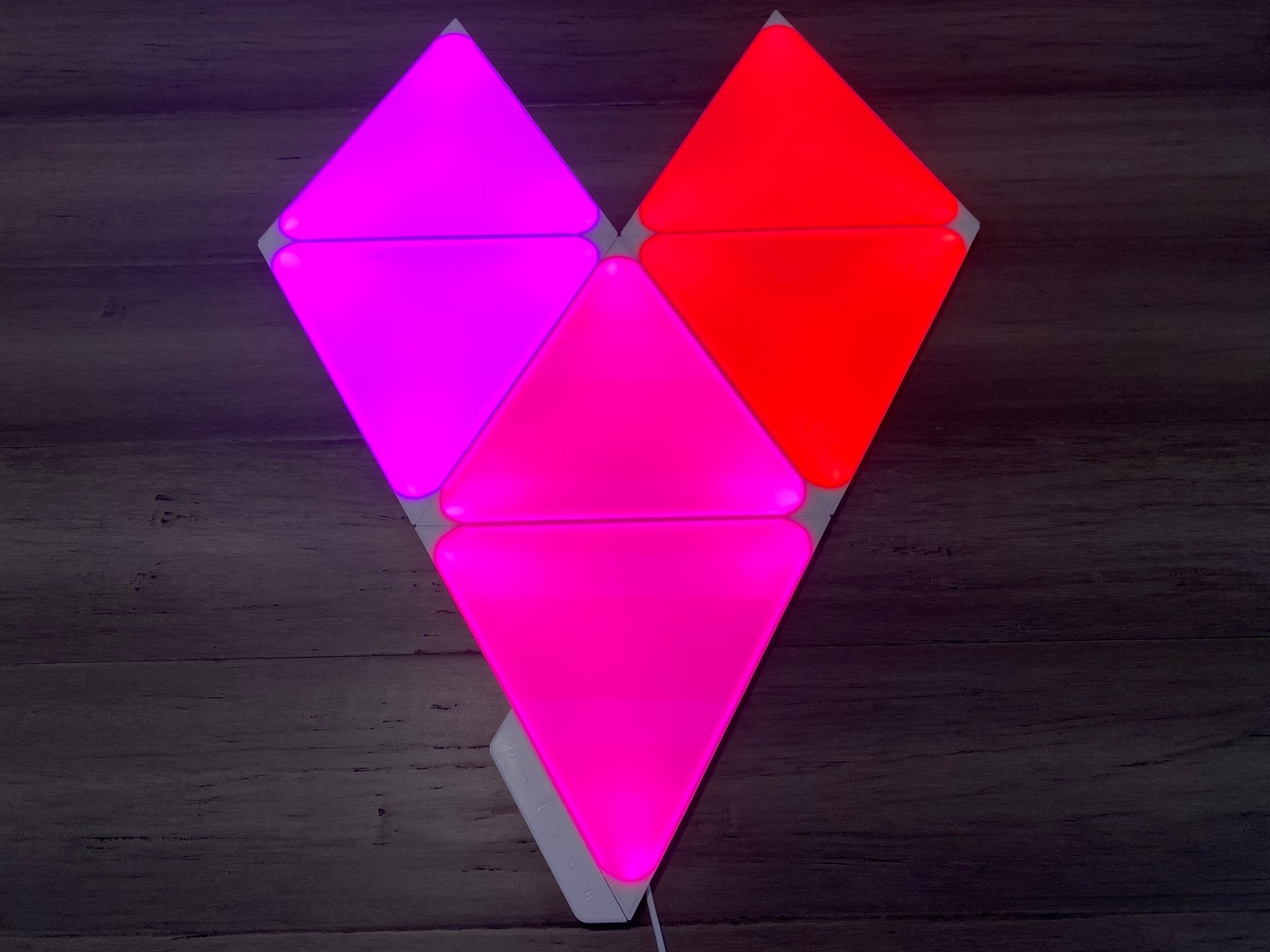

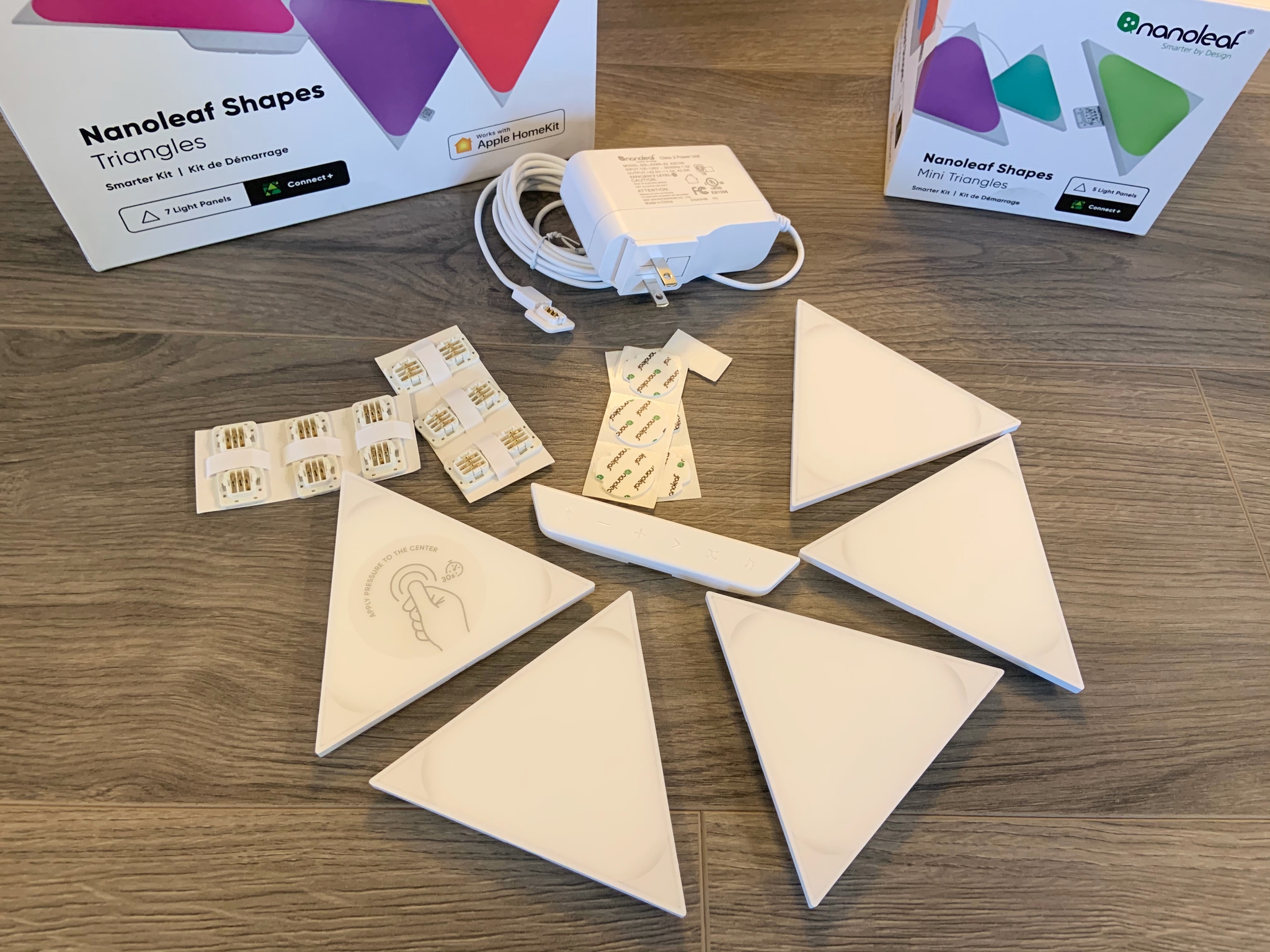
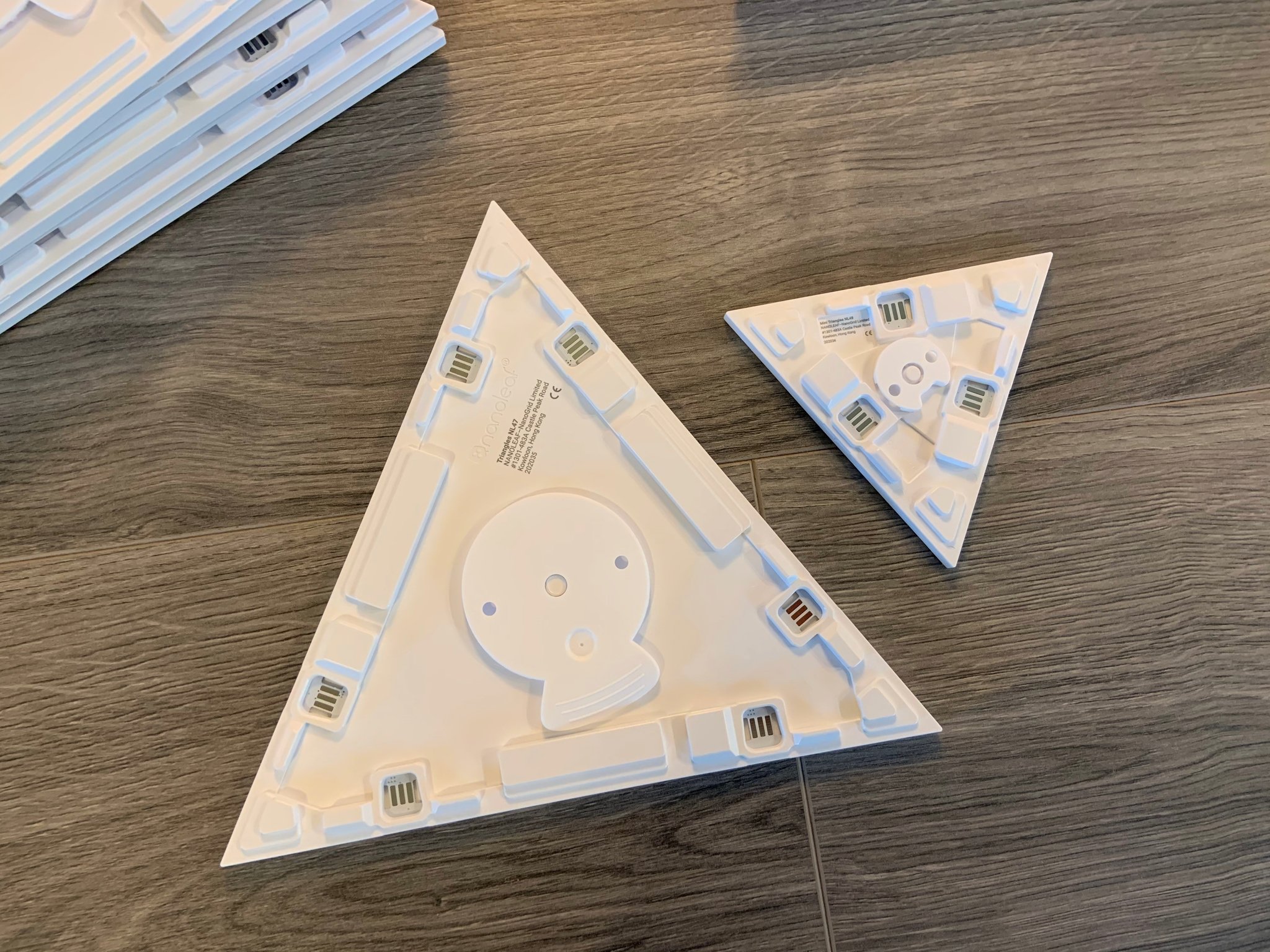
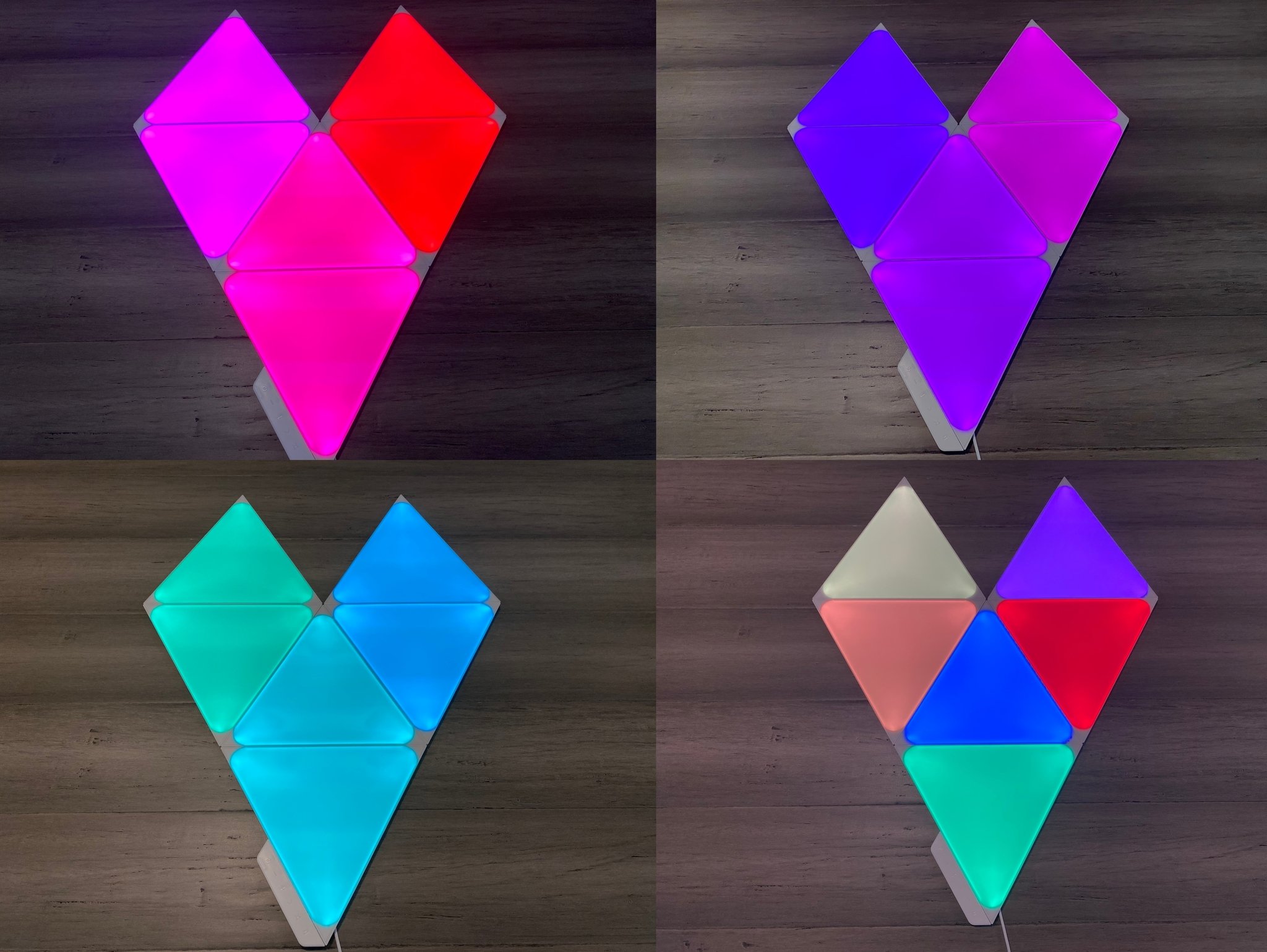
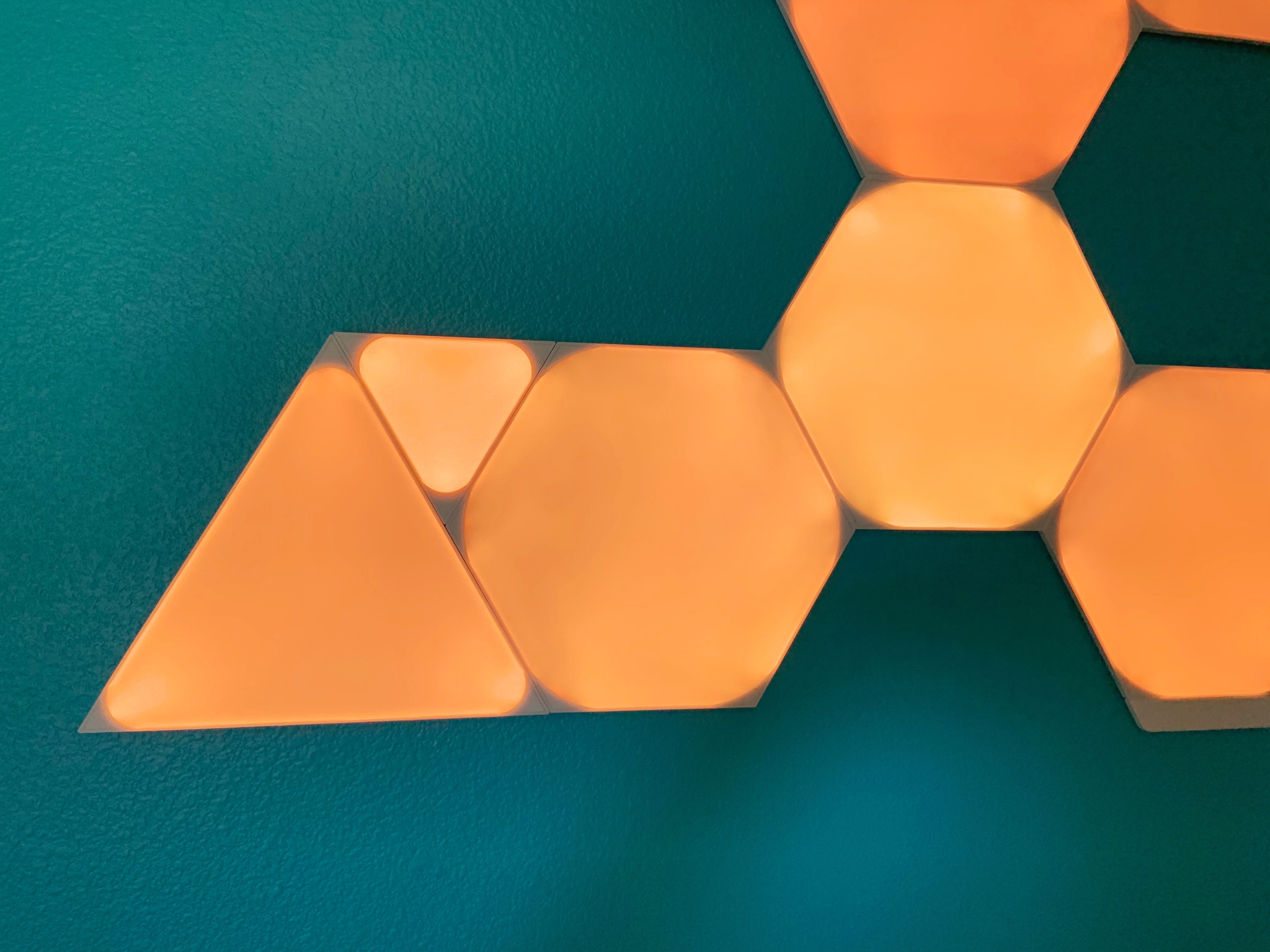
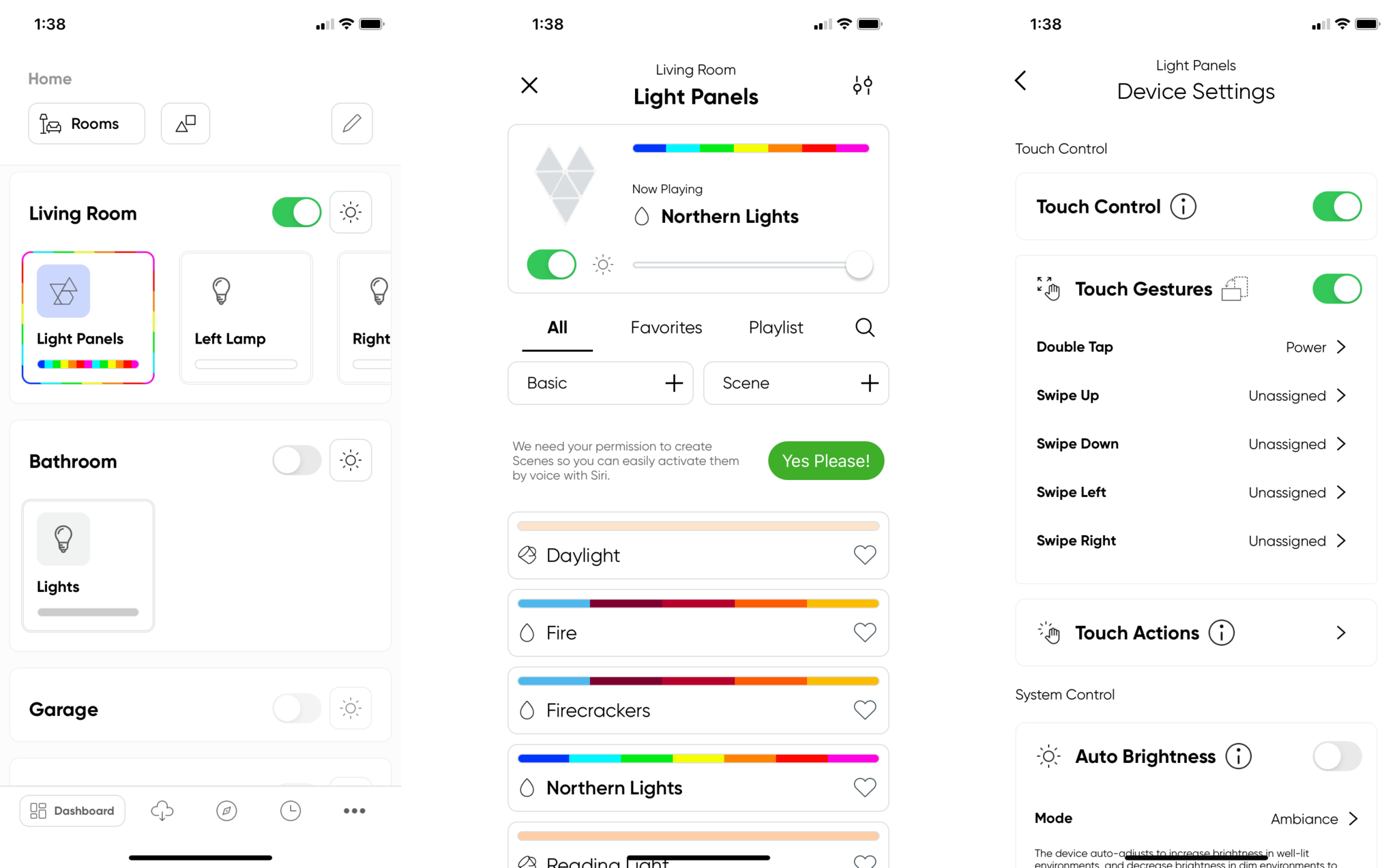
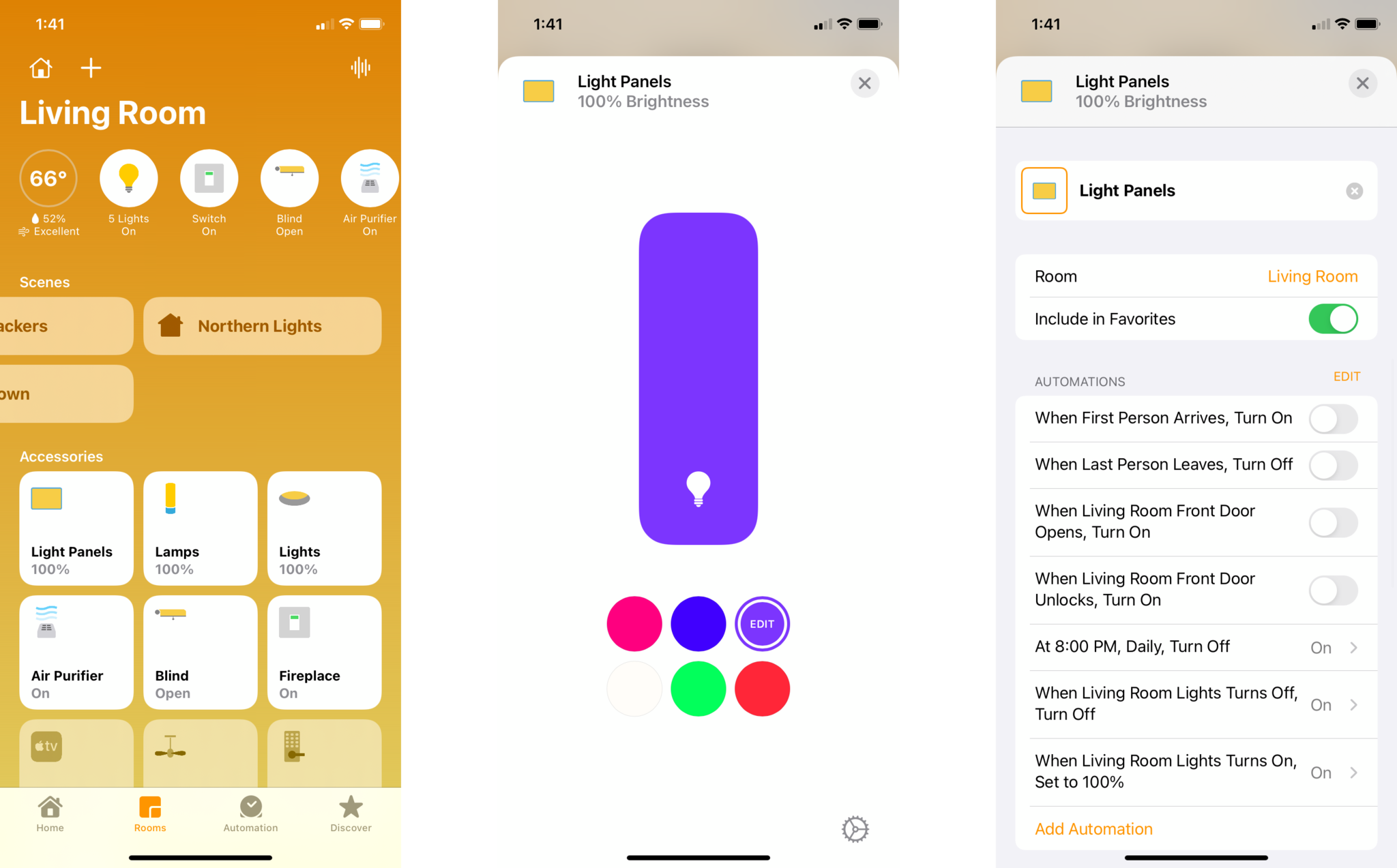
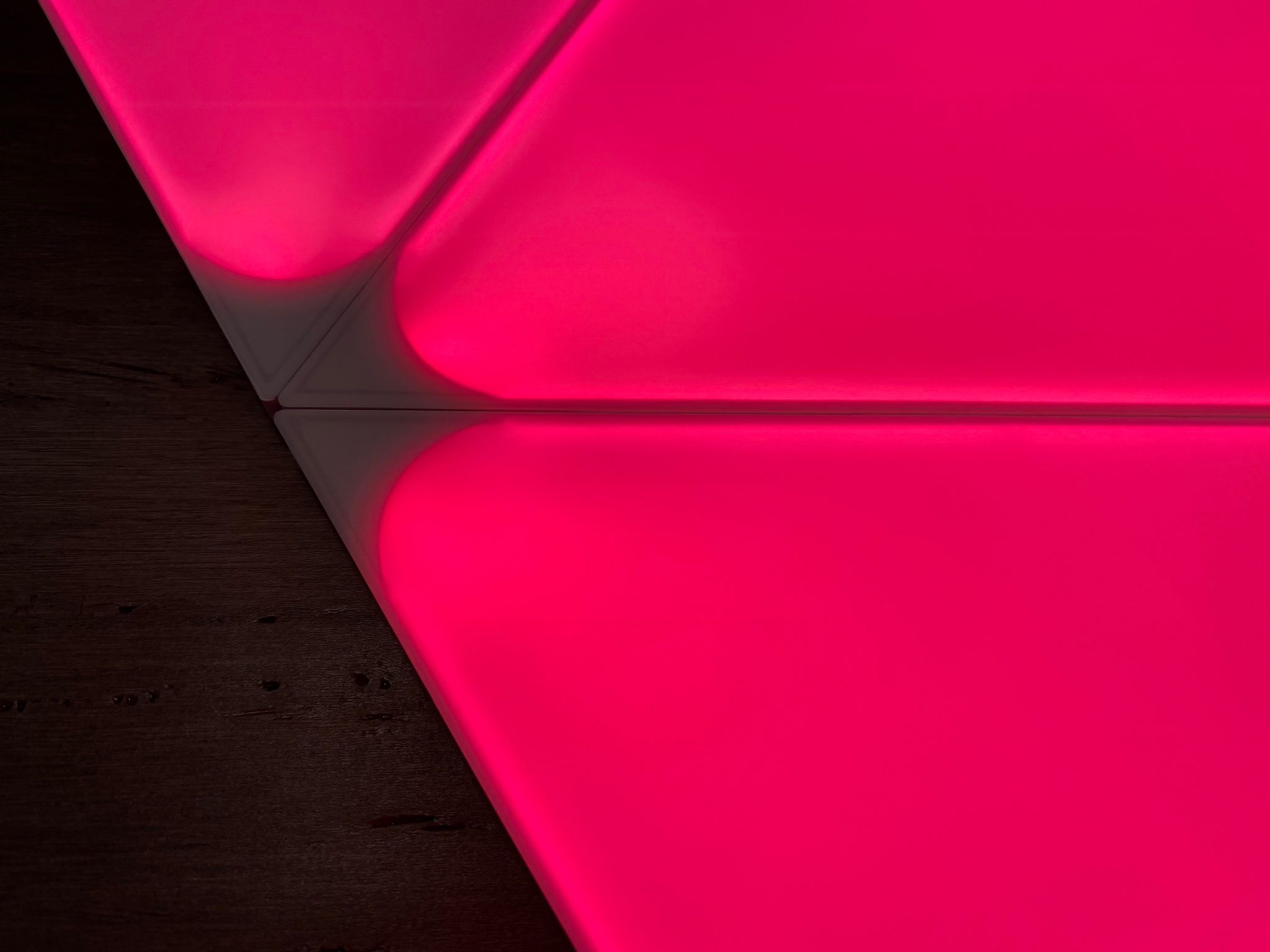
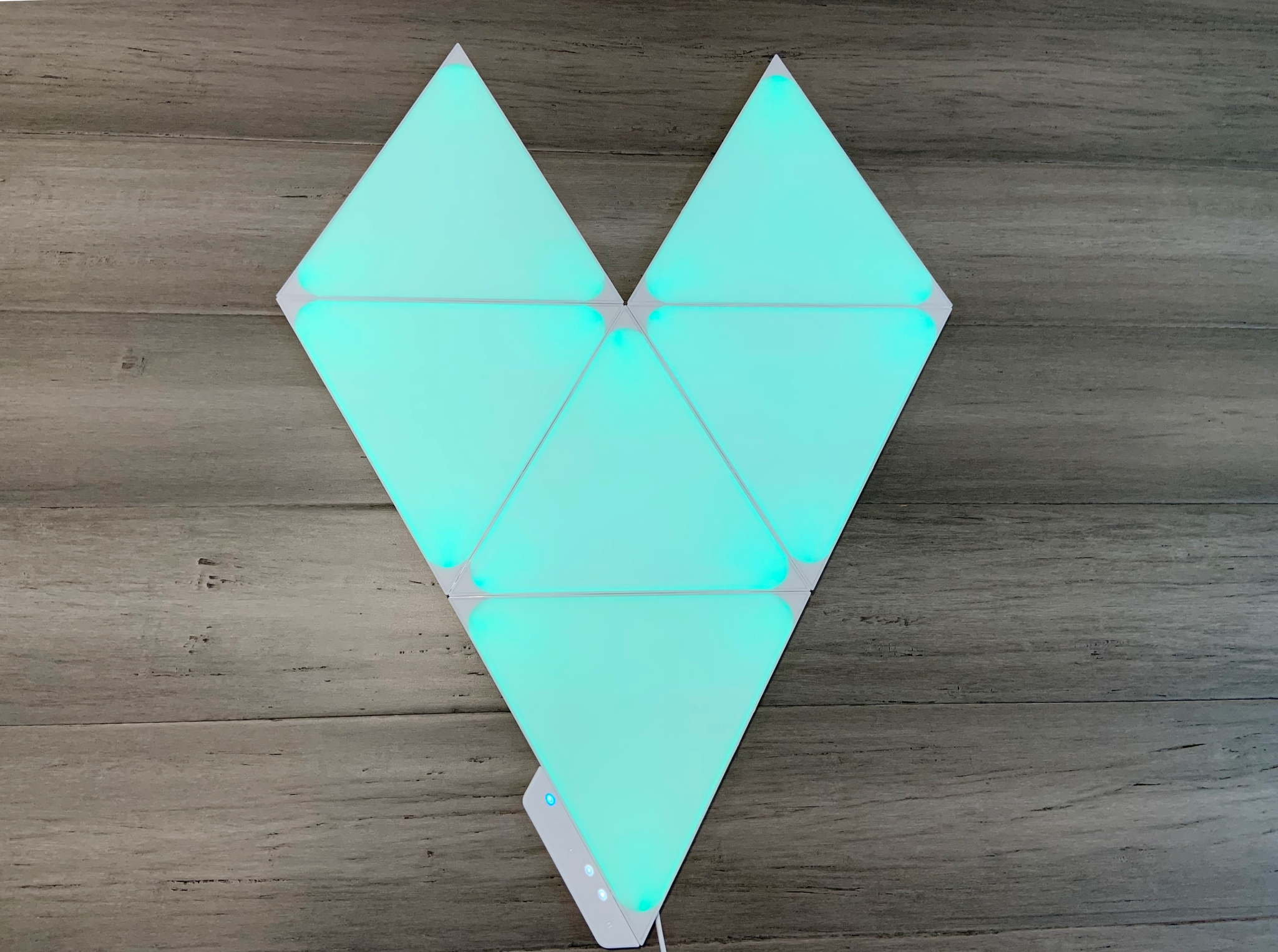
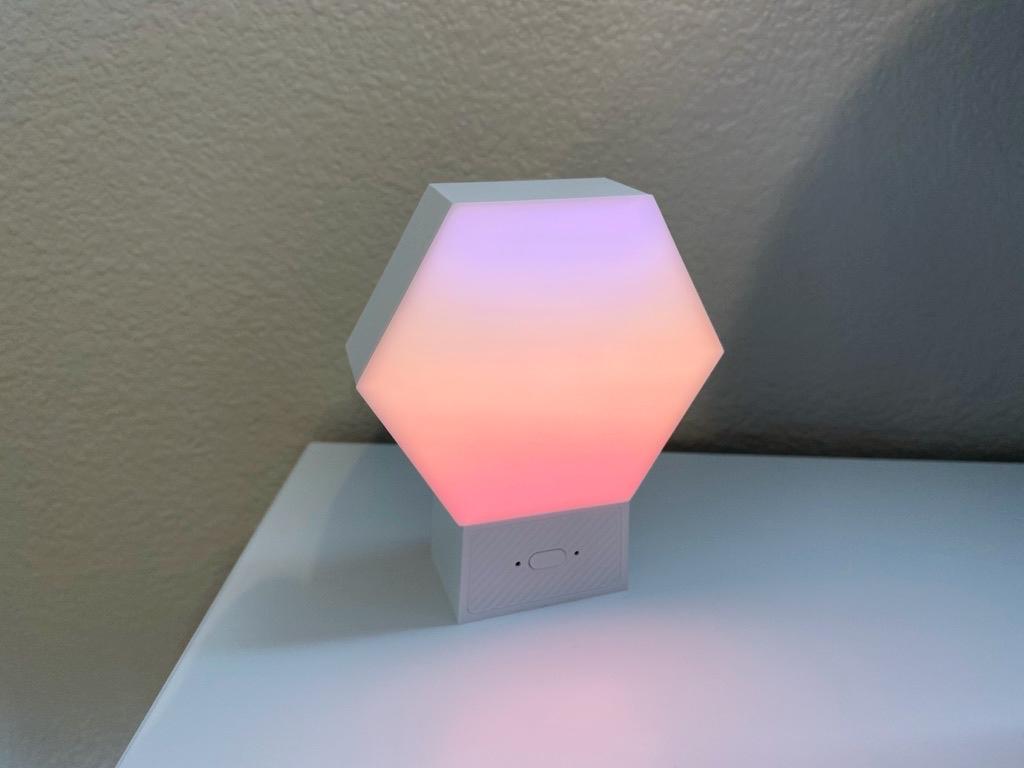
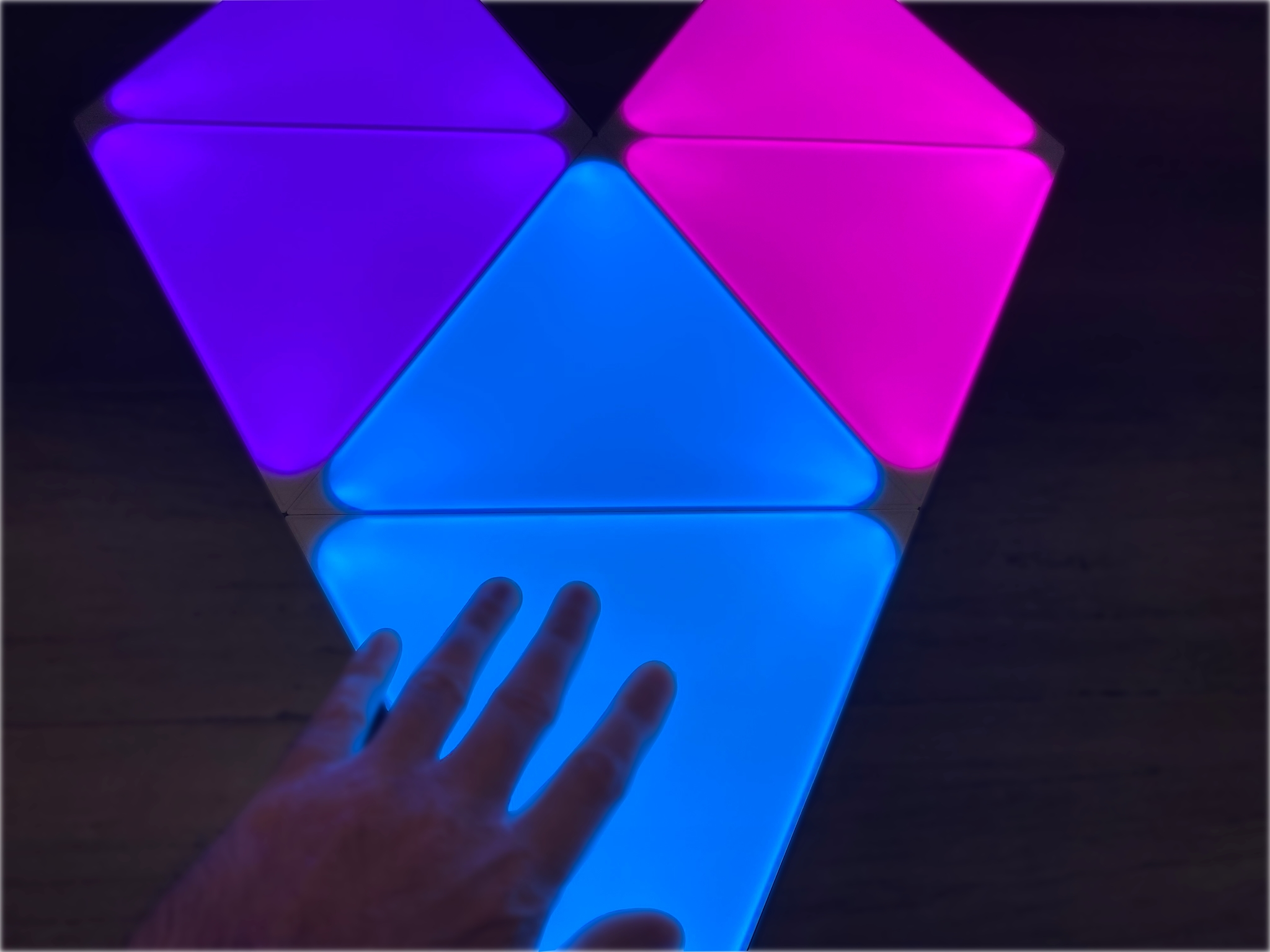
No comments:
Post a Comment